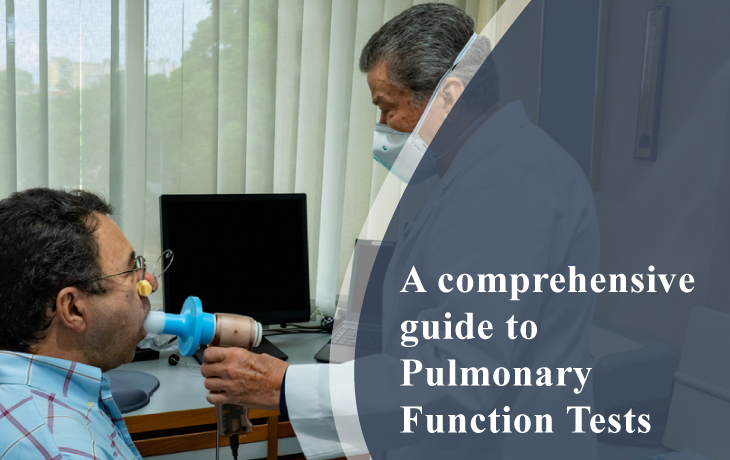Have you been referred to get a pulmonary function test (PFT)? And are you wondering what a PFT is and what to expect? Well, this article explains everything you want to know about this technique.
A pulmonary function test is a simple procedure for measuring the existing condition of your lungs. It can help your doctor determine the cause of your breathing problems and decide on the best treatment for you.
What Is a Pulmonary Function Test (Pft)?
A pulmonary function test, or PFT, is a simple and painless procedure that helps your doctor understand how well your lungs are functioning. The test is done by measuring how much air you can breathe in and out, and how effectively your lungs move air in and out of them.
This information can help your doctor make a diagnosis if you have a lung disorder or breathing problem. It can also help them track the progress of any treatment you’re receiving.
PFTs are usually done in an imaging centre or clinic setting and take only a few minutes to complete. You’ll be asked to breathe into a tube that’s connected to a machine called a spirometer.
The Advantages of Taking a PFT
Before you take a pulmonary function test, it’s important to understand what it is and what it can do for you. A PFT is a procedure used to measure the capacity of your lungs to hold air and release it. This information can help your doctor diagnose and treat any breathing problems you may have.
The benefits of taking a PFT include:
- Determining the extent of any breathing problems you may have
- Gauge the impact of treatment on your breathing
- Tracking the progression of a respiratory disease
- Identifying lung cancer early.
It’s also important to understand that there are risks associated with any medical procedure. Thus it makes sense to talk about them beforehand with your doctor.
How to Prepare for a PFT
A pulmonary function test, or PFT, is a diagnostic procedure that measures the airflow and lung capacity of a person. Before taking a PFT, you should be aware of the benefits of the test as well as the risks involved.
You should also prepare for the test by avoiding smoking and excessive exercise for at least 12 hours before the test. You will also need to wear loose-fitting clothing so that your doctor can easily measure your lung function.
What You Can Expect During the Exam
When you arrive for your pulmonary function test, you should anticipate it taking about 30 minutes. The technician will explain the procedure to you and have you sit in a comfortable chair.
For the test itself, your doctor will have you inhale deeply and then exhale forcefully into a tube that’s connected to the spirometer. The spirometer then measures your lung volume and lung capacity. This measurement is repeated several times to get an accurate reading.
It’s also possible your doctor will order additional tests during this time, like inhaling different solutions or having you wear a mask that measures how much oxygen is coming in and out of your lungs.
While these tests are usually not painful, they can be uncomfortable or make you feel like something is stuck in your throat. If the test causes you any discomfort, simply notify your doctor, and they will modify the procedure to make it more comfortable.
Risks Associated With Pulmonary Function Tests
While it is safe and regarded as an effective diagnostic tool, there are some minor risks you should consider.
The first and most common risk is discomfort from the breathing actions required during the test. Other than that, there is a very small risk of feeling dizzy or having chest tightness during spirometry. For people who have asthma attacks or heart disorders, exacerbated symptoms can occur. In rare cases, blood clots or pneumothorax (collapsed lung) can also occur during testing.
If you have any pre-existing medical conditions such as asthma, bronchitis, or emphysema, inform your health care provider before taking the pulmonary function test so they can decide if this test is right for you. Additionally, if you experience any chest pain or feel lightheaded during the procedure, tell your healthcare provider immediately.
How to Interpret the Results of a PFT
Now that you know about the procedure, let’s talk about how to interpret the results of a PFT. The general aim is to measure how well your lungs work, and this will be compared with healthy values for your age, height, and gender.
If your results show that you have lower lung function than expected, your doctor may conduct further tests to pinpoint the cause of your decrease. Depending on their findings, they may refer you to a specialist or suggest lifestyle changes that can help improve your respiratory health.
On the other hand, if you exceed the predicted values for your age group, then it could mean that there are no abnormalities in your pulmonary system. However, it’s always wise to discuss any lingering questions or concerns with your doctor after the test.
Conclusion
If you’re scheduled for a pulmonary function test, you’ll likely have a lot of questions about what to expect. That’s why we’ve put together this guide to answer some of the most common questions people have about the procedure.
And if you are looking for a reliable provider to reap the many benefits this procedure offers, Ontario Diagnostic Centres provide trustworthy diagnostic services in the Greater Toronto Area.
All their centres have trained radiologists and technologists with years of experience in the field. Additionally, the provider employs state-of-the-art equipment to ensure that the authenticity of the medical reports cannot be questioned.

